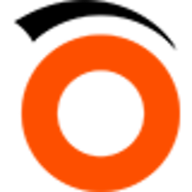

Zenoss Cloud and Statseeker compete in the network monitoring space. Zenoss Cloud has a strong advantage in advanced monitoring capabilities and integrations, while Statseeker leads in speed and efficiency.
Features: Zenoss Cloud offers comprehensive real-time analytics, extensive integration options, and strong support for various platforms. Statseeker features a lightweight footprint, high-speed performance, and efficient data processing capabilities.
Room for Improvement: Zenoss Cloud could enhance speed and data processing efficiency, reduce upfront costs, and improve deployment simplicity. Statseeker might benefit from broader integration capabilities, more advanced monitoring features, and enhanced scalability options.
Ease of Deployment and Customer Service: Zenoss Cloud provides flexible deployment options, including cloud-based and responsive customer support. Statseeker features a streamlined on-premise deployment model, focusing on simplicity and rapid setup.
Pricing and ROI: Zenoss Cloud often involves higher upfront costs, justified by its feature set and scalability, leading to long-term ROI. Statseeker has a lower entry cost with a straightforward pricing structure, appealing for immediate efficiency gains.
| Product | Market Share (%) |
|---|---|
| Statseeker | 0.3% |
| Zenoss Cloud | 0.6% |
| Other | 99.1% |

| Company Size | Count |
|---|---|
| Small Business | 2 |
| Midsize Enterprise | 6 |
| Large Enterprise | 34 |
| Company Size | Count |
|---|---|
| Small Business | 4 |
| Large Enterprise | 5 |
We monitor all Network Monitoring Software reviews to prevent fraudulent reviews and keep review quality high. We do not post reviews by company employees or direct competitors. We validate each review for authenticity via cross-reference with LinkedIn, and personal follow-up with the reviewer when necessary.